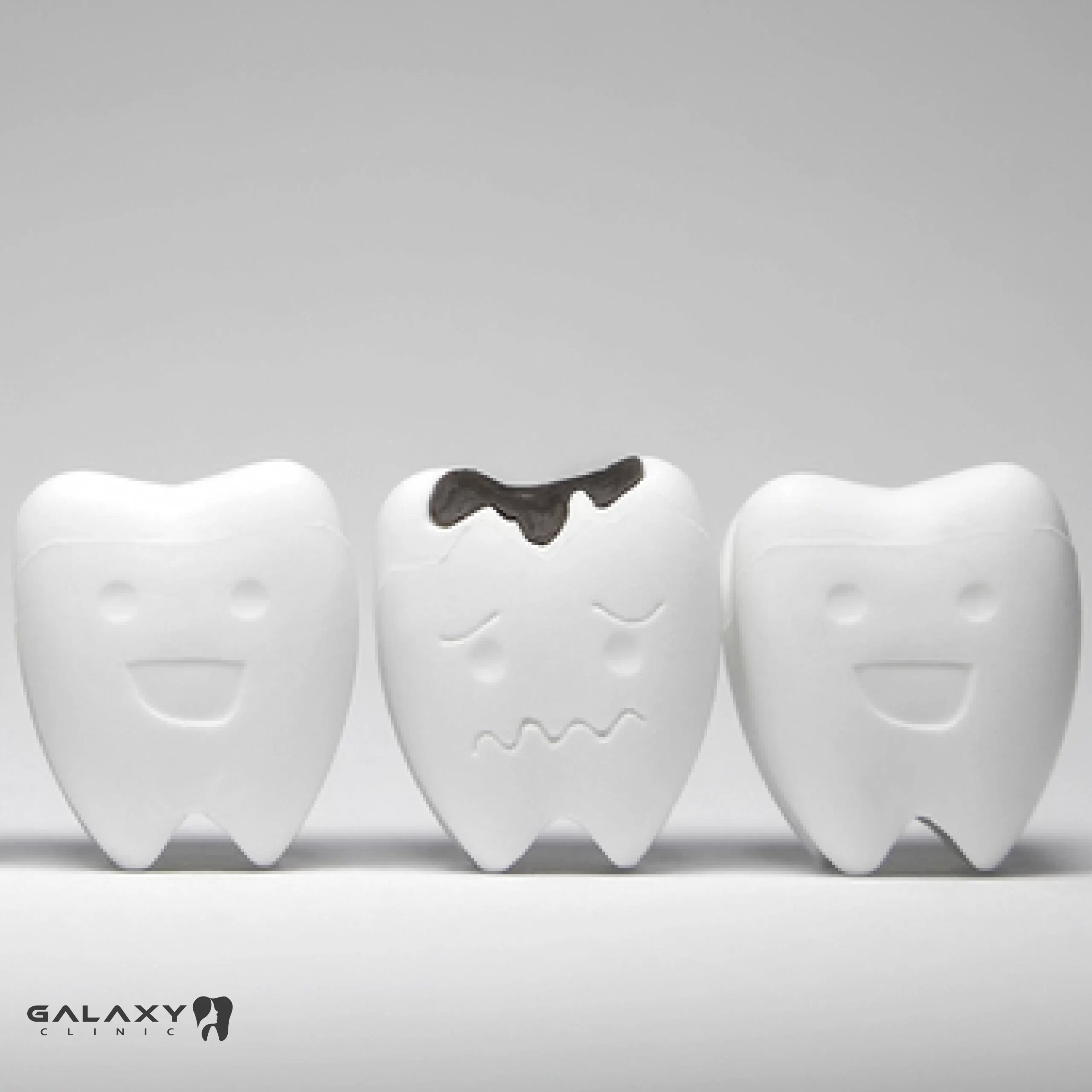Tooth decay is damage to a tooth’s surface, or enamel that it may develop into tiny openings or holes. It happens due to many factors, when bacteria in your mouth and not cleaning teeth well. If tooth decay is not treated, it gets larger and affects deeper layers of your teeth can cause pain, infection, and even tooth loss.
There are some habits that can protect you against these cavities like regular dental visits, good brushing and flossing.
Signs you may have a tooth decay:
Sometimes, it is impossible to detect a very small cavity by yourself. The dentist needs to check your tooth, there are a few common symptoms of a developing tooth cavity:
● Toothache: the pain may become especially acute when you eat something hot, cold, or really sweet.
● Sensitivity: You’ll find that one of your teeth is more sensitive to changes in temperature than it used to be.
● Discolored or dark spots on a tooth: It might be a white spot or a dark or discolored spot.
● Hole in the tooth: it might be a tiny or larger hole or crack that you can feel with your tongue.
● Swelling gums: the gums may look raw, red,or swollen.
● Bad breath: persistent bad breath is often a sign of gum disease.
How to prevent tooth decay:
It is an important part of practicing good oral hygiene for preventing tooth decay. There are some strategies you can implement to avoid tooth decay.
- Check your teeth with the dentist regularly: this can help to recognize and treat the tooth decay before it gets worse.
- Brush your teeth at least twice daily and after meals. You can use a fluoridated toothpaste.
- Limit sweets: Try to avoid sugary drinks or food.
How is tooth decay treated?
Treatment depends on the severity of tooth decay, includes:
- Fluoride: fluoride treatments can repair tooth enamel. You may need prescription toothpaste and mouthwash.
- Fillings: Dental fillings are made of silver amalgam, composite resin or gold.
- Root canal: the healthcare provider removes the pulp that contains nerve endings that cause pain.
- Tooth extraction: If a root canal isn’t possible, your healthcare provider may extract (pull) the tooth. You may need a dental implant to replace a pulled permanent tooth.


